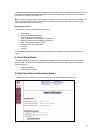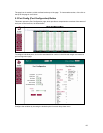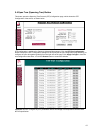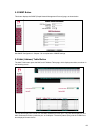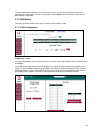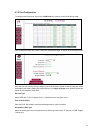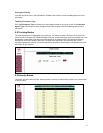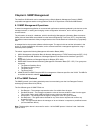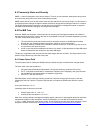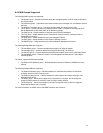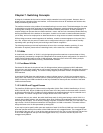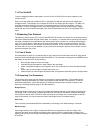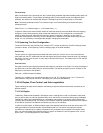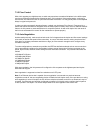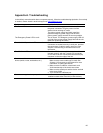
73
Chapter 6. SNMP Management
The IntraCore 35160 switch can be managed using a Simple Network Management Protocol (SNMP)
compatible management station running platforms such as HP OpenView or MG Soft’s MIB Browser.
6.1 SNMP Management Operations
A network management application is concerned with performance statistics gathered by the devices on the
managed network, in reading and changing current configuration information, and in receiving alerts of
unusual events.
The information is stored in a database, which is described by Management Information Base documents
(MIBs). Most of these MIBs are available from the Internet Engineering Task Force (IETF), the global body
that defines Internet standards. Many managed devices also include data that is described by a proprietary
MIB.
A managed device incorporates software called an agent. The agent is able to read the information in the
device, to update configuration information, and to communicate with a management application using a
standard protocol (SNMP).
The switch supports the following Management Information Bases (MIBs):
1. MIB II: Management Information Base for Network Management of TCP/IP based Internets (RFC 1213).
2. Ethernet Interface MIB: Definitions of Managed Objects for the Ethernet-like Interface Types (RFC
1643).
3. Bridge MIB: Definitions of Managed Objects for Bridges (RFC 1493).
4. RMON MIB: Remote Network Monitoring Management Information Base (RFC 1757). Four groups are
supported:
• The Ethernet Statistics Group
• The Ethernet History Group
• The Alarm Group
• The Event Group
5. ASANTE-SWITCH-MIB: Enterprise MIB for management of features specific to the 35160. The MIB file
is available at Asanté’s website, www.asante.com.
6.2 The SNMP Protocol
The SNMP protocol is an industry-standard protocol communicating over the User Datagram Protocol,
exchanging Protocol Data Units (PDUs).
The five different types of SNMP PDUs are
1. Get Request – The manager requests the value of a variable from the agent.
2. Get-Next Request – The manager requests the value of the next variable in order from the agent.
This is often used to walk a MIB and retrieve many values one after the other.
3. Set Request – The manager tells the agent to change the value of a given variable.
4. Get Response – The agent returns the data for any of the above requests and confirms any
changes of value.
5. Trap – The agent sends data to the manager on its own initiative in response to predefined events
(such as hardware failure).
Note: The description above is accurate for version 1 of the SNMP protocol. Versions 2 and 3 add other
types of PDUs.



